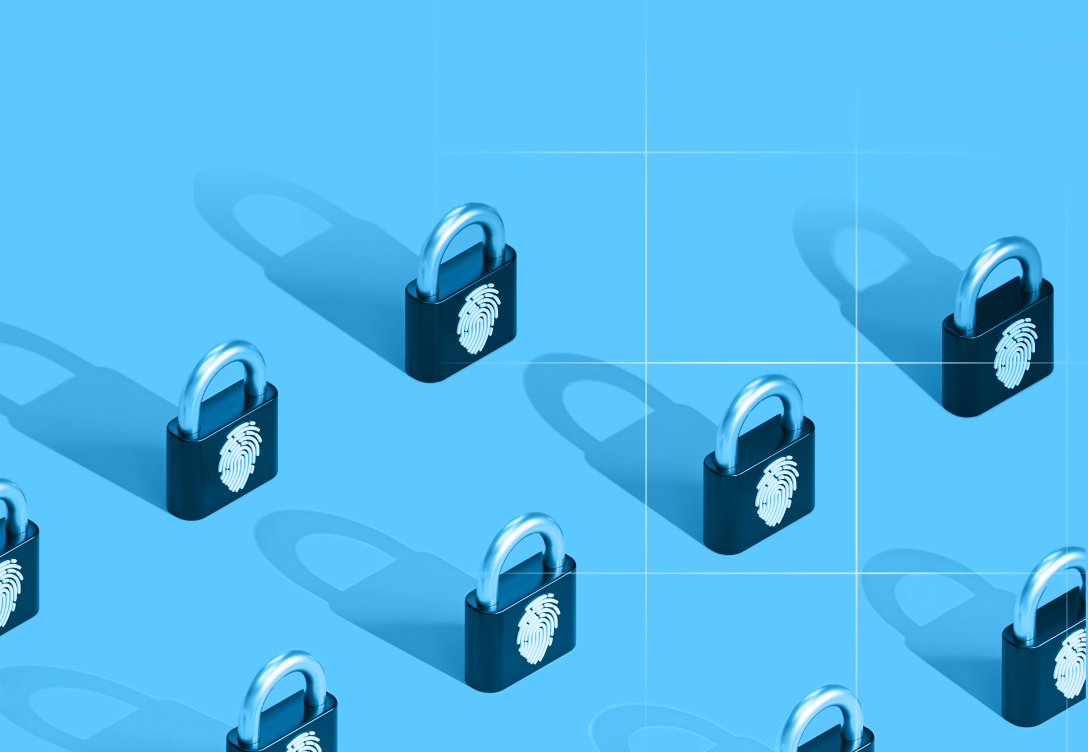Market Overview: Explosive Growth Meets Fundamental Gaps
The Data Security Posture Management (DSPM) market is experiencing unprecedented growth, with projections reaching $34.2 billion by 2034 and a compound annual growth rate (CAGR) of 34.2% according to recent market analysis. This explosive expansion reflects organizations' urgent need for better data visibility and protection across increasingly complex digital environments.
However, beneath these impressive growth figures lies a fundamental disconnect: current DSPM solutions are not adequately addressing the data security challenges that drive market demand. Organizations are investing heavily in tools that cannot handle AI workloads, dynamic data flows, or modern cloud-native architectures effectively.
Current Market Landscape
Major Vendor Categories
The DSPM market currently divides into several distinct categories, each with specific strengths and limitations:
Traditional Enterprise Security Vendors
- Companies extending existing security platforms with DSPM capabilities
- Focus on integration with existing security stacks
- Strength: Enterprise relationships and comprehensive security suites
- Limitation: DSPM features often feel like add-ons rather than purpose-built solutions
Cloud-Native Security Specialists
- Vendors building DSPM specifically for cloud environments
- Emphasis on multi-cloud visibility and cloud service integrations
- Strength: Deep cloud platform knowledge and API integrations
- Limitation: Limited support for on-premises systems and hybrid architectures
Data Discovery and Classification Leaders
- Companies with strong data discovery engines adding security posture features
- Focus on comprehensive data inventory and automated classification
- Strength: Mature data discovery technology and classification accuracy
- Limitation: Weak in real-time monitoring and dynamic data flow tracking
Compliance and Governance Platforms
- Vendors approaching DSPM from regulatory compliance angles
- Emphasis on audit reporting and policy management
- Strength: Deep regulatory knowledge and compliance automation
- Limitation: Limited technical security capabilities and threat detection
The $34.2B Market Opportunity vs. Reality Gap
Despite massive market investment, organizations report persistent challenges that indicate current solutions are missing critical capabilities:
Gap 1: AI Workload Blindness
Market Investment: Organizations are spending billions on DSPM tools to gain data visibility.
Reality: Current solutions cannot effectively monitor AI model training, inference pipelines, or autonomous AI agent data access patterns.
Evidence: According to Trend Micro's 2025 AI Security Report, 93% of security leaders expect daily AI attacks in 2025, yet existing DSPM tools provide minimal visibility into AI system data usage.
Market Impact: Organizations implementing AI at scale discover their DSPM investments provide inadequate protection for their most critical AI workloads.
Gap 2: Real-Time Processing Limitations
Market Investment: Enterprise buyers prioritize "real-time" monitoring capabilities when evaluating DSPM solutions.
Reality: Most current solutions use batch processing with scanning intervals measured in hours or days, not the sub-second response times required for modern applications.
Technical Challenge: Stream processing architectures required for true real-time monitoring remain rare among current DSPM vendors, despite customer demand.
Operational Impact: Security teams cannot respond to data security incidents as they occur, only discovering violations during periodic scans.
Gap 3: Cloud-Native Architecture Misalignment
Market Investment: Cloud adoption drives significant DSPM spending as organizations seek visibility across multi-cloud environments.
Reality: Current tools struggle with containerized applications, serverless functions, and microservices architectures that define modern cloud-native development.
Architecture Problem: Legacy DSPM tools designed for virtual machine and database-centric environments cannot track data flows through Kubernetes clusters, API gateways, and ephemeral compute resources effectively.
Development Friction: DevOps teams find current DSPM tools slow down deployment pipelines and provide limited value for cloud-native applications.
Vendor Landscape Analysis
Market Leaders and Their Limitations
Microsoft Purview DSPM
- Strength: Deep integration with Microsoft ecosystem and Office 365
- Market position: Strong in Microsoft-centric organizations
- Limitation: Limited effectiveness outside Microsoft environments; weak real-time capabilities
- AI gap: Basic AI governance features that cannot handle complex AI pipelines
Traditional Security Giants (Palo Alto, Fortinet, Check Point)
- Strength: Comprehensive security platforms with enterprise relationships
- Market position: Leveraging existing customer base for DSPM expansion
- Limitation: DSPM feels secondary to core networking security focus
- Innovation gap: Limited investment in AI-native security approaches
Cloud Specialists (Varonis, BigID, Symmetry Systems)
- Strength: Purpose-built data discovery and classification engines
- Market position: Strong technical capabilities for data inventory
- Limitation: Weak in real-time monitoring and dynamic policy enforcement
- Scale challenges: Performance issues with high-velocity data streams
Emerging Players (Securiti, Concentric AI, Netwrix)
- Strength: Modern architecture and specific capability focus
- Market position: Gaining traction with advanced technical features
- Limitation: Limited enterprise relationships and ecosystem integration
- Maturity gap: Newer platforms may lack operational stability
Customer Pain Points Driving Market Growth
Alert Fatigue and False Positives
Problem Scale: Organizations report DSPM tools generating thousands of daily alerts with false positive rates exceeding 85%.
Root Cause: Correlation-based detection methods that cannot distinguish between actual security events and normal operational activities.
Business Impact: Security teams ignore DSPM alerts, defeating the purpose of data security monitoring.
Market Opportunity: Solutions that eliminate false positives through causality-based detection could capture significant market share.
Compliance Audit Complexity
Regulatory Pressure: New regulations like the EU AI Act require continuous monitoring and automated evidence collection that current tools cannot provide effectively.
Audit Burden: Organizations spend weeks preparing for compliance audits because DSPM tools cannot generate audit-ready evidence automatically.
Cost Impact: Manual compliance processes cost organizations millions annually in preparation time and external audit fees.
Solution Gap: Current DSPM tools provide data discovery but lack the continuous monitoring and evidence generation capabilities that modern regulations require.
AI Innovation Bottlenecks
Development Delays: Security reviews for AI projects take weeks or months because DSPM tools cannot assess AI-specific data risks quickly.
Risk Assessment Challenges: Organizations cannot quantify data risks for AI projects, leading to either excessive caution or inadequate protection.
Governance Gaps: Current DSPM tools lack AI-specific governance capabilities, forcing organizations to develop custom processes.
Competitive Impact: Organizations with better AI security capabilities deploy AI solutions faster and capture market advantages.
Geographic Market Dynamics
North American Market
Size: Largest DSPM market globally, driven by regulatory requirements and early AI adoption.
Characteristics: Focus on compliance automation and enterprise-scale deployments.
Vendor concentration: Dominated by traditional security vendors with established enterprise relationships.
Growth drivers: CCPA, HIPAA compliance requirements and increasing AI workload adoption.
European Market
Regulatory environment: GDPR and EU AI Act creating demand for continuous monitoring capabilities.
Market characteristics: Emphasis on data sovereignty and privacy-by-design approaches.
Vendor opportunities: Solutions that address AI Act compliance requirements have significant competitive advantages.
Growth projections: Fastest-growing DSPM market due to regulatory complexity.
Asia-Pacific Market
Emerging opportunity: Rapid cloud adoption and AI investment driving DSPM demand.
Characteristics: Price-sensitive market with emphasis on cloud-native solutions.
Local vendors: Regional players gaining traction with specialized offerings.
Growth potential: Highest long-term growth potential as digital transformation accelerates.
Market Evolution Predictions
Consolidation Phase (2025-2027)
Market dynamics: Traditional security vendors will acquire specialized DSPM companies to fill capability gaps.
Customer impact: Organizations will prefer integrated platforms over point solutions.
Technology evolution: Focus on platform integration and unified management interfaces.
Competitive landscape: Fewer vendors with more comprehensive offerings.
AI-Native Transition (2027-2030)
Technology shift: Market will demand AI-native security approaches that can handle dynamic data flows.
Vendor disruption: Current market leaders may lose position to companies with AI-native architectures.
Customer requirements: Real-time processing and causality-based detection become table stakes.
Innovation focus: Advanced analytics, autonomous response, and predictive security capabilities.
Agentic AI Era (2030+)
Market transformation: Autonomous AI agents will require fundamentally different security approaches.
New capabilities: Security tools that can monitor and govern AI agent decision-making.
Vendor opportunities: Companies building for agentic AI will capture next-generation market share.
Customer evolution: Organizations will need security platforms that can adapt autonomously.
Investment and Innovation Opportunities
Technology Gaps Representing Market Opportunities
Real-Time Stream Processing: Current vendors lack the architecture to provide sub-second data security monitoring at enterprise scale.
Causality-Based Detection: Market opportunity for solutions that eliminate false positives through proven causal relationships rather than statistical correlation.
AI-Native Governance: Massive opportunity for platforms designed specifically for AI workload security rather than traditional data protection.
Policy-as-Code Integration: Market demand for security policies that compile into runtime controls rather than reactive monitoring.
Competitive Positioning Strategies
Technical Differentiation: Vendors with superior architecture for dynamic data environments will capture market share from legacy approaches.
Vertical Specialization: Industry-specific DSPM solutions may outcompete horizontal platforms in regulated sectors.
Platform Integration: Solutions that integrate seamlessly with existing security stacks have advantages over standalone point solutions.
Outcome-Based Pricing: Vendors offering results-based pricing models may differentiate from traditional licensing approaches.
The Market Reality Check
The $34.2B DSPM market represents real customer demand for better data security capabilities. However, the disconnect between market investment and solution effectiveness indicates significant opportunity for vendors that can address current gaps.
Organizations are buying current DSPM solutions not because they are satisfied with the capabilities, but because they need some level of data visibility and no better options exist. This creates a massive opportunity for AI-native security approaches that can deliver the capabilities customers actually need.
The vendors that will capture the largest market share are those building Data Journeys™ capabilities specifically designed for AI-era data protection requirements rather than extending legacy approaches with limited AI features.


